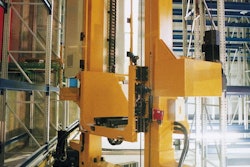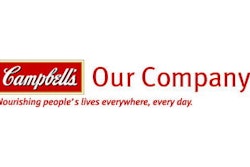
Manufacturing is complex, requiring many differing skills, technologies, strategies and approaches. Too often, when we speak of manufacturing, we speak of only one small segment and then extrapolate experience from that segment to manufacturing as a whole. As a result, we work with flawed information and obtain poor results.
I started some fact gathering on this topic in preparation for a presentation that I was to make at The Automation Conference. Unfortunately, a medical issue kept me from flying to the conference, so I will share some of my findings here. It was interesting to me that the conference included three concurrent tracks: manufacturing, processing and packaging. But aren't these all Manufacturing? Do individuals working in these areas have such differing interests and speak such differing languages that we need separate program content for each of them? Maybe so. Two personal anecdotes may illustrate why.
A colleague of mine and I were paid to travel 2000 miles to speak to a group of manufacturers about industrial maintenance skills. Seeing that most of the attendees were in metal-related industries, we asked our host if they didn't have any food, beverage, or pharmaceutical companies in the area. The reply was: "Yes, but we don't think of them as manufacturers, so we didn't invite them." Really??
At the OMAC meeting in Orlando this past February, a meeting was held between the leadership of the OMAC Packaging Workgroup and the OMAC Machine Tool Workgroup. Both groups focus upon standards and guidelines for machinery. Both are looking at what would seem to be similar network communications issues among machinery. After the meeting, a spokesperson was assigned to give a report to the general membership on what was accomplished. It was reported that both groups expended a lot of effort trying to understand each other, with individuals frequently asking; "What do you mean by that?" Are the technical terms used for metal cutting machines and packaging machines that different? I think they are.
I looked up manufacturing in the dictionary. It said, "Manufacturing is the production of finished goods from raw materials." Digging further it said, "Production is the process of manufacturing a product for sale." A bit circular. Wikipedia provided a definition that mentioned discrete manufacturing and process manufacturing. This is a common, but not universally accepted subdivision.
Next, I thought that the US Commerce Department might be a good source of information, but their websites don't provide a definition of manufacturing and they did not reply to my inquiry. The Commerce Department does have a Manufacturing Council comprised of representatives of 25 companies. Nearly all of the members who are manufacturers would fall within the definition of discrete manufactures, so maybe the Commerce Department, like many others, takes the narrow view that manufacturing only involves things like metal cutting, forming and parts assembly.
Moving on, I checked the US Census Bureau. The census bureau uses the North American Industrial Classification System (NAICS codes) to identify economic segments. The NAICS Codes specifically indentify 10,537 types of manufacturing. Among the extensive amount of accompanying definitional material one finds the following: " The Manufacturing sector comprises establishments engaged in the mechanical, physical, or chemical transformation of materials, substances, or components into new products. ... The boundaries of manufacturing and the other sectors of the classification system can be somewhat blurry." Drilling into the details at the levels of 4 and 6 digit NAICS codes, one finds the terms processing, manufacturing, and packaging along with a host of other descriptors.
So, what do we mean by manufacturing? One term to describe so many activities seems too limiting. Ten thousand definitions is overwhelming. Are the groups that lobby for manufacturing serving everyone's interests or just those of a specific segment? When we ask a school for 'manufacturing training', do they know what we mean? Do those entities that claim to have 'manufacturing solutions' or 'manufacturing coursework' have something that is useable by all manufacturers? We too frequently jump past these questions. The term 'manufacturing' is almost useless in these contexts unless we clarify what type of manufacturing we mean.
A classification that I have found extremely useful over the years recognizes manufacturing as a continuum that may be divided into three classifications; process manufacturing, discrete manufacturing and hybrid manufacturing. Companies in each of these three segments share common attributes that distinguish them from the other two areas. For example, process industry operations rely heavily upon continuous process control, discrete industries upon CNC control and hybrid industries upon general purpose multi-access motion control. There are many other attributes that one may look at that distinguish each of these three segments. I frequently explore these attributes when addressing manufacturing audiences. Since many hybrid manufacturers are also packagers, and since the term manufacturing most generically refers to discrete manufacturing, perhaps this explains The Automation Conference's processing, manufacturing and packaging tracks.
It is fairly common to speak of process vs. discrete manufacturing. The hybrid segment is usually overlooked, resulting in a good deal of misunderstanding. With the help of a colleague, I decided to see if we could measure the relative size of these three segments for the US economy to see if their is good reason to give hybrid more recognition. The results speak for themselves.
Given a US manufacturing output of approximately $5 trillion, discrete manufacturing accounts for 38% of the total with process and hybrid equally dividing the remainder with 31% each. Rather large for an overlooked segment.
On the employment side, discrete manufacturers employ 50% of the manufacturing workforce, hybrid 32% and process just 18%. Taking ratios of these two measures leads to the conclusion that process industries have the highest productivity with an output per employee that is almost 2 1/2 times the output per employee of discrete industries. Hybrid industries fall somewhere in between.
On the wage side, process industries pay the highest wages per employee followed by hybrid and then discrete. One can draw many conclusions from this data. For example, process industries are more highly automated requiring more highly skilled employees who are paid higher wages resulting in the highest output per dollar of wages paid. Discrete manufacturing has the lowest output per dollar of wages paid, just slightly more than half compared to process.
One may find benefit in getting even more granular than this, but since most of us think of manufacturing as just one thing, I think this three-fold increase in classification is an excellent starting place. When I work with colleges, I help them to decide if they are focusing on courses for the process, discrete or hybrid segments. When I work with manufacturers, I help them to view themselves in one of these segments and to view their customers in their proper segment. This can greatly aid understanding of needs and expectations. I would suggest that interactions between customers and suppliers will be different depending upon the segment each is in.
So, don't think of manufacturing as an amorphous whole - think of it in broad segments with unique characteristics. I believe you will find it useful.
Comments
Good article, I agree.
Posted by: Greg Mangione on May 30, 2012
I enjoyed the article, but you should have used spell check before you posted it. It's a shame to write an article on manufacturing and misspell the word at least three times along with some other misspellings.
Posted by: Mickey on May 30, 2012
I apologize for the bad spelling as first posted. This is the first article typed on my IPad, which resulted in a lot of slips of the finger on the virtual keyboard. I thought it had been spell-checked, but obviously it was not.
Posted by: Keith on May 30, 2012
It looks to me you took a meandering path to try to define what manufacturing is. I believe in simplicity, so to me manufacturing comprises of all the activities involved in converting raw materials, discrete components and sub-assemblies of parts into tangible physical entities (anything you can touch and feel). Notice I did not use the term "finished goods" or even the word "products", as many manufacturing companies produce sub-assemblies of products.
Attempting to divide into sub-classes is somewhat futile as in most cases they are very much intertwined, or the choice to make the processes continuous, batch or discrete is many time a matter of economic decision.
Posted by: David Hoenig on May 30, 2012
I agree Keith. One thing you need to check out is how the stock market and upper levels of Government understand manufacturing. My experience tells me they have a very bad understanding of manufacturing and they dictate policies and directions for our future or misfortune. The deterioration of manufacturing in North America is a direct result of this. In short, their understanding of manufacturing is that it is a dirty third world type of activity that enlightened societies need to get rid of to evolve into lofty services and intellectual pursuits which by themselves create no new value or security, especially since most third world nations steal intellectual property at will and patents are becoming just a piece of paper to insure more propagation of legal and other services.
Posted by: Paul Zepf on May 31, 2012
Excellent article, Keith....we missed you at The Automation Conference (maybe we should call it The Manufacturing Conference). Hope you are on the mend!
Posted by: Joe Angel on May 31, 2012
I really enjoyed reading this article. I work as a graphic designer and is now training for a sales and marketing job. Our company sells packaging machines and packaging materials, and as a beginner in the packaging industry, this has been educational to me since packaging and the manufacturing process more or less goes side by side. It seems i need to learn more about manufacturing as well.
Posted by: Ryan on June 6, 2012

























